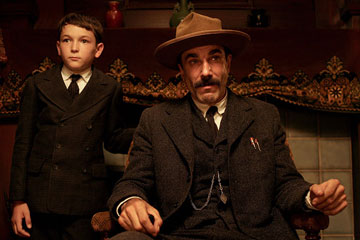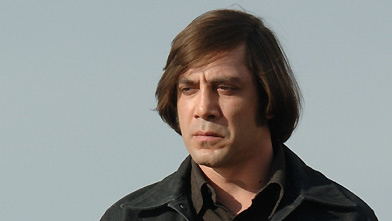Paul Thomas Anderson’s The Master was one of the most intriguing films of the last year. As a big fan of Anderson’s earlier movies especially, I’ve been wanting to write about The Master – but it’s such a puzzling work, I decided it was time to bring in back-up. So, for this post and for the next three, I’ll be joined by a occasional contributor and good friend to discuss the film. I hope you enjoy this somewhat different, longer format!
Matt Thanks a lot for joining me in discussing The Master, Paul Thomas Anderson’s enigmatic 2012 film. Let’s jump right into the conversation – our first one in this format, so let’s hope we won’t end up at each other’s virtual throats! What I’d be interested in, first and foremost, is how you see The Master and Anderson’s development as a director. To be more specific: I was a big fan of the director’s Boogie Nights (1997) and Magnolia (1999). When There Will Be Blood came out in 2007, though, I could barely reconcile the film and its director to the earlier work, and the same is still true for The Master. The earlier films have a certain signature style, as do the later, but the styles could hardly be more different. It’s like Anderson has completely reinvented himself as a director. How do you see this?
Mege PTA stated in an interview that after Boogie Nights, he wanted to avoid being famous for a certain kind of movie, so he knew that his next movie would be intentionally different. But that doesn’t really answer your question, does it? That next movie was Magnolia, and it is not hugely different from Boogie Nights in terms of atmosphere and style. He even uses some cast members and some of the same musical score bits in both. The differences are more far-fetched: Boogie Nights takes place over a few years, Magnolia takes place in less than 24 hours, if I remember correctly. Maybe the real answer is that he is refreshingly versatile.
Matt Versatile he definitely is – disconcertingly so. To me, without wanting to call them derivative, Magnolia and Boogie Nights both feel like descendents of Altman – they’re very much ensemble pieces of the sort that Altman has done, and Magnolia is clearly influenced by Short Cuts – and Scorsese, in terms of form. There’s an energy in the filmmaking, the cinematography and editing especially, that recalls Goodfellas, for instance. The two films both have sequences that are so relentless, they almost become overbearing – as if Anderson was a talented, personable version of Henry Hill all coked out.
Rewatching The Master, what strikes me about the filmmaking is how those two influences seem to be entirely gone. If anything, both The Master and There Will Be Blood have echoes of Kubrick, who couldn’t be much more different from Altman and Scorsese. They both have a weird buzz, underscored (no pun intended!) by the music, they both feature magisterial, strangely distancing camera work, and visual symmetries abound. You can almost feel the unearthly sort of wonder of 2001‘s monolith in some scenes in Anderson’s two most recent films.
But I don’t want to overplay the “Who’s your cinematic daddy?” game. My main point is probably that while I find recent Anderson fascinating, I have to say I miss the warmth of Boogie Nights and Magnolia. Do you find any of the earlier Anderson in The Master (other than Phillip Seymour Hoffman, obviously), and what do you like best about what his work has developed into?
Mege I’ve never seen it that way, but yes, Boogie Nights and Magnolia both have their tenderness and warmth. While PTA wanted to utterly destroy Jimmy Gator, one of his other aims was to make Claudia Wilson smile. On the other hand, it’s hard to imagine a heartfelt movie about the oil business. Same with the cult business. There is greed, recklessness and manipulation in both There Will Be Blood as well as in The Master. I also have to admit that, although your comparisons to Altman and Scorsese ring true to me, I didn’t think of any influences while watching, maybe because a PTA is so darned original every time.
This discussion of Paul Thomas Anderson’s The Master will continue soon; next time we’ll be talking about the film’s two main characters and the performances by The Master‘s stars, Joaquin Phoenix and Phillip Seymour Hoffman.

